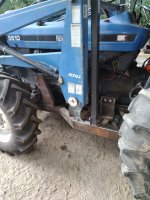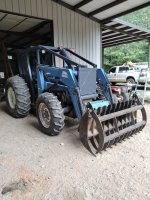Cougsfan
Veteran Member
- Joined
- Sep 10, 2008
- Messages
- 1,647
- Location
- Eastern Washington State
- Tractor
- Ferguson TO35, Branson 4720CH
Why? When you get a puncture, you get to have the joy of dismantling the tire to patch the tube, rather than just taking a few minutes to put in a plug. And with filled tires, the dismantling operation is even far more fun! Another nice thing about filled tubeless tires is that if you do have a puncture, it is really easy to find the hole.I run tubes. If it don't have tubes, I put tubes in.


